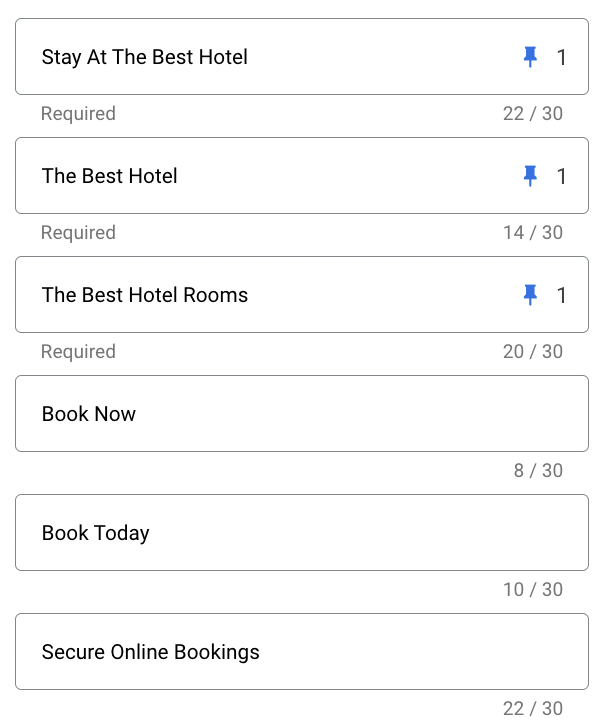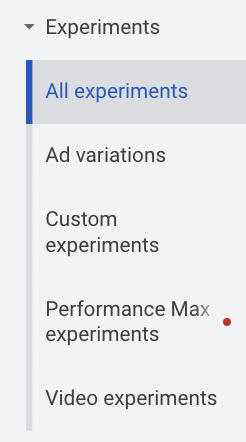PPC Ad Testing: Everything You Need to Know
by Jeremy Razook
Welcome to the exciting world of pay per click (PPC) advertising! Whether you are a newbie to PPC for hotels or a weathered industry expert, you should be at least familiar with the concept of ad testing.
In this article we are going to lay out some of the simplest and most effective tests you can run right now to ensure your campaigns are utilizing the best ad copy, assets, and landing pages to convert your site visitors into guests.
We also touch on a few more advanced tests that you can try after you’ve mastered the basics.
PPC testing topics in this article:
- What is PPC ad testing?
- Why is PPC ad testing important?
- 3 Types of PPC testing you can run right now
- 5 important PPC ad testing best practices
- 6 advanced PPC tests you can run
- Boost your direct bookings with PPC testing
What is PPC ad testing?
Testing, also called “A/B Testing” or “Split Testing”, is the process of isolating a single variable and running different versions of that variable to determine which variation performs better based on a predetermined KPI (key performance indicator).
It is important to discuss goals up front, like what KPI you are optimizing for, and what variable you are going to test before you get started.
Why is PPC ad testing important?
The process of testing is incredibly valuable to advertisers as it allows one to continually improve campaign metrics and therefore performance metrics. From a PPC perspective, testing allows one to try different ad copy and ad features to ensure the best possible ads are running at all times.
3 types of PPC testing you can run right now
Now that you are familiar with the testing basics, it is time to decide on exactly what you want to test when it comes to your PPC ads. The options are essentially limitless, though you will want to be sure to only test one thing at a time.
1. Testing ad copy
Target KPI: Click-through rate (CTR)
When testing PPC ad copy you are truly only focused on CTR because the goal of the test is to see which ad variation gets more people to click through to the website. It would be nice to see higher conversion rates (CR) or return on ad spends (ROAS) but you can not directly attribute those metrics to the ad copy alone.
Things you should test within your ad copy
- Offers
- Example – Test % Off vs $ Off
- Authoritativeness
- Example – Test “Official Hotel Website” in headline vs “Book Securely Online”
- Sense of Urgency
- Example – Test “Limited Time Offer” vs “Limited Availability”
- Call to Action
- Example – Test “Book Now” vs “Reserve Your Room Now”
- Pathing
- Example – Test using a secondary and/or tertiary path vs homepage only
- Responsive Search Ad pinning
- Example – Test variations of your brand name in position 1 vs position 2
- Responsive Search Ad pseudo-expanded text ad testing
- Example – Test responsive search ads as pseudo-expanded text ads by only including three pinned headlines and two pinned descriptions vs unpinned responsive search ads.

2. Testing ad assets
Target KPI: CTR (with some CR exceptions)
Ad assets (formerly ‘extensions’ in Google Ads) can be extremely effective at taking up more SERP (search engine results page) real estate and increasing CTR. But using the right assets and testing the content of each asset is how you maximize performance.

Types of ad assets you should test
- Sitelink assets
- Appears below the ad with clickable links to take users to a particular section of the site.
- You will want to use the principles we just discussed for ad copy and incorporate landing page testing within your sitelink assets.
- Test the copy.
- Also test which pages you are using as sitelinks.
- Appears below the ad with clickable links to take users to a particular section of the site.
- Structured Snippet assets
- Appears below ad descriptions but is not clickable.
- Here you can list your hotel amenities.
- Test which amenities you list and the order in which you list them.
- Callout assets
- Appears below the description but is not clickable.
- Here you list awards like Tripadvisor Certificate of Excellence or other local awards that separate your property from the rest.
- Test these awards against one another to see what increases CTR.
- Image assets
- Here you will want to test different images:
- Room vs room
- Interior vs exterior
- Amenity vs room
- Amenity vs amenity
- Here you will want to test different images:
- Price assets
- Show “Rates From” in clickable elements below your ad.
- Test Rates for different room types and test how you list the room type.
- Example: Oceanfront 1 BR vs Oceanfront Rooms
- However, price assets may not be the best option for hotels with rates that change frequently.
- Promotion assets
- Shows $ Off or % Off below your ad
- Test $ Off vs % Off
- Test different % Off
There are other assets available but these are typically what we use for hotel PPC. If your hotel has an App you may want to test using an App Asset and see if it increases downloads.
How to measure results for ad asset testing
One thing to pay attention to with ad asset tests is understanding the data you are looking at. By default, when you view asset data you will see data for everything when that asset was present.
There are different segments that are important to view to get the real picture of how each asset truly performs and how assets affect overall CTR of ads. In Google Ads, you should click on Segment > This Extension vs Other so you can actually see if people are clicking on a particular Sitelink, Price, and Promotion.

You should also segment by click type and see what element of the ad people were clicking on when that asset was present.

3. Test ad landing pages
Target KPI: CR
We focus on CR for landing page tests because we already got the person to click on the ad, now we want to see whether they are more likely to convert whether they land on one page versus another. One landing page test is to alter the landing page you are using. The other is to change the landing page to a different page on your site.
Types of page elements you should test on your landing pages
- With this test we want to change something on the page we think would make the user more likely to convert.
- We use things like Microsoft Clarity and user testing to identify:
- Items on the page that we want people to click (but they aren’t).
- Things that people try to click (but they can’t).
- Excessive scrolling.
- For example, your site may expect someone to click on a rate to get in the booking engine but adding a large “Book Now” does a better job.
- We may decide to make non-clickable images clickable.
- If people are scrolling around looking for the next step, we may want to add a sticky booking widget.
- Sometimes we will even create a dedicated landing page just for users who have clicked on our PPC ads.
- These landing pages sometimes tend to act as mini-sites that contain property info, room type info, amenity info, FAQs, rates and a strong & obvious CTA.
- The info is less detailed than you would find on the individual pages dedicated to each of those items.
Types of landing pages you should test
In the off chance that we don’t have access to make changes to the site, we can change the landing page to a different page for our ads.
- For example, if you are sending all of your users from your PPC ads to your homepage, you should test that against your rooms page, a specials page or even directly into the booking engine.
- We have also seen this strategy work conversely. We sent people as far down the funnel as we could into the booking engine but they wanted more info before making their purchase decision. We changed from the booking engine to the rooms page and CR increased because users didn’t have to take a step back in the process to get the info they needed.
5 important PPC ad testing best practices
Test ONE element at a time
White multivariate tests are possible, PPC testing is pretty simple, so stick to the basics and only test out one element at a time. This means that everything else remains the same, except for the one variable that you are going to test.
Test variations simultaneously

Though you can run one version of your ads and then follow up with another version of the ad, it is a much better practice to test variations simultaneously to minimize any time-based factors that might throw off the results. Utilize Google’s Experiments feature to split test things like ad copy, landing pages, assets, etc.
Document everything about your test
Whether you use a PPC platform that automates testing or are running tests the old fashioned way, be sure that you are documenting every change you make and the results or outcome of each test. Having a history will help you make smarter decisions in the future.
Adjust and repeat
After your test is complete and your results are documented, make the necessary adjustments to your campaign based on the data you received and then start planning your next round of tests. Just because you ran a successful test and increased performance doesn’t mean you’re now done testing. You must continue to test new elements and strive to find the optimal combination of ad copy, landing pages, assets & more.
Don’t forget about Microsoft Ads
Microsoft Ads offers many of the same basic testing features as Google Ads and just as many ad extensions. But because of Bing’s limited search market share, it can at times be difficult to get viable test results in Microsoft Ads. If you do run a test in Google Ads, you can import your successful results to Microsoft Ads using their convenient import feature.
6 advanced PPC tests you can run
- Testing Bidding Strategies
- Target ROAS, Max Conversions, Target Impression Share, etc
- These require longer testing periods due to the machine learning process.
- Testing Targeting
- Test how campaigns perform when you adjust audience, demographic & geographic targeting.
- Testing Device Types
- Test splitting device types into their own campaigns or setting bid adjustments per device type.
- Day Parting
- Testing how bid adjustments set for certain days of the week and/or hours of the day can affect performance.
- Performance Max testing
- Tests how Performance Max campaigns may benefit your business goals as it runs alongside your existing Search, Display, Video, and Discovery campaigns.
- Video experiments
- Tests how videos of different lengths, messaging, etc. impact performance.
Boost your direct bookings with PPC testing
As hotel marketing experts, TravelBoom can implement a variety of pay per click campaigns to boost your direct bookings. Drop us a line to see how we can help your hotel in the pay per click advertising space.